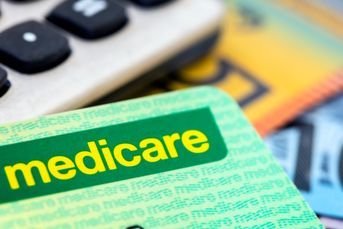Time heals most credit reports following the financial crisis
Improving credit scores might entice households to start borrowing more
Millions of Americans lost their homes to foreclosures or short sales during the housing crisis. Fortunately for the economy, time heals most wounds — and credit reports.
The number of people joining the rolls of those knocked from homeownership peaked seven years ago, so those blotches to their histories are starting to roll off the books right about now. The resulting improvement in credit scores means more Americans will find themselves with the ability and means to once again apply for loans, and not just for home purchases.
“Improving credit scores might entice households to start borrowing more in general,” said Ralph McLaughlin, chief economist at real estate search engine Trulia. And what better time than now, when interest rates are so low.
That, combined with sustained gains in employment and bigger increases in pay, could give consumer spending, which accounts for almost 70% of the U.S. economy, an added lift over the next couple of years. The impact, though, is hard to quantify because it’s difficult to estimate how many people will once again be emboldened to borrow after experiencing such a shock, said Jacob Oubina, a senior U.S. economist at RBC Capital Markets in New York.
The number of consumers with a new foreclosure added to their credit reports peaked at about 566,000 in the second quarter of 2009, according to data from the Federal Reserve Bank of New York. In the four years through 2010, that group totaled 6.8 million.
https://s32566.pcdn.co/wp-content/uploads/assets/graphics src=”/wp-content/uploads2016/07/CI10603477.JPG”
Negative events such as short sales, when a home is sold for less than what’s owed on it, and foreclosures generally roll off a person’s credit report after seven years, according to the three major providers of consumer credit scores and reports: Experian Plc, Equifax Inc. and TransUnion. With that anniversary fast approaching, better access to credit may be on the way for many.
The obvious effect will be in stronger demand for homes, which may also translate into higher spending on durable goods such as appliances and furnishings, said Mr. Oubina. Consumers may also feel more comfortable applying for new credit cards, auto loans or other types of debt.
The credit repair alone could help people improve their financial standing by reducing their borrowing costs, freeing up money that could then be used for consumption.
“Banks are awash in reserves, so it’s a backdrop that’s ripe for further extension and further growth in consumer credit,” Mr. Oubina said.
HOUSING BUBBLE
A TransUnion study last year estimated that of the approximately 7 million consumers who were negatively impacted as the housing bubble burst — including those who were either severely delinquent on their mortgages, negotiated a short sale or went into foreclosure — only 1.2 million had recovered enough by December 2014 to meet Fannie Mae selling guidelines.
Based on their credit histories, the agency estimated that 2.2 million more could meet those criteria through 2019.
Still, there is reason to be cautious about the impact on consumer spending in the near future. For one, many people who experienced foreclosure not only lost their homes but also had trouble paying other bills, which means the hit to their credit report was larger, and their scores could stay lower for longer.
That is particularly true for prime borrowers, those considered among the lowest risks, which could deter them from taking on more debt, according to a 2013 Fed study by Kenneth Brevoort and Cheryl Cooper, who are now researchers at the Consumer Financial Protection Bureau.
CREDIT SCORES
The research showed credit scores do not recover to their prior levels for approximately one-third of prime borrowers even a decade after their foreclosures were initiated.
Also, just because people can come back into the market doesn’t necessarily mean they will, said Richard Green, an outgoing senior adviser on housing finance for the U.S. Department of Housing and Urban Development.
“What I don’t know is are they going to want to come back to homeowning, or were they so traumatized by the experience of being foreclosed upon and seeing their savings wiped out that they’re just not going to be interested?” Mr. Green said.
There are tentative signs that are least some are. The homeownership rate for consumers who are 35 to 44 years old — which includes members of the generation most hurt by the housing crisis — has risen for two straight quarters on a year-over-year basis, U.S. Census data show. That’s the first time that’s happened in two years and a sign some of the previously foreclosed-upon buyers could be returning to the market, said Trulia’s Mr. McLaughlin.
Any positive effect “will be more of a slow trickle of the buyers that will come back rather than a flood,” he said. This will offer “a slow and steady support of the U.S. housing market.”
Learn more about reprints and licensing for this article.








